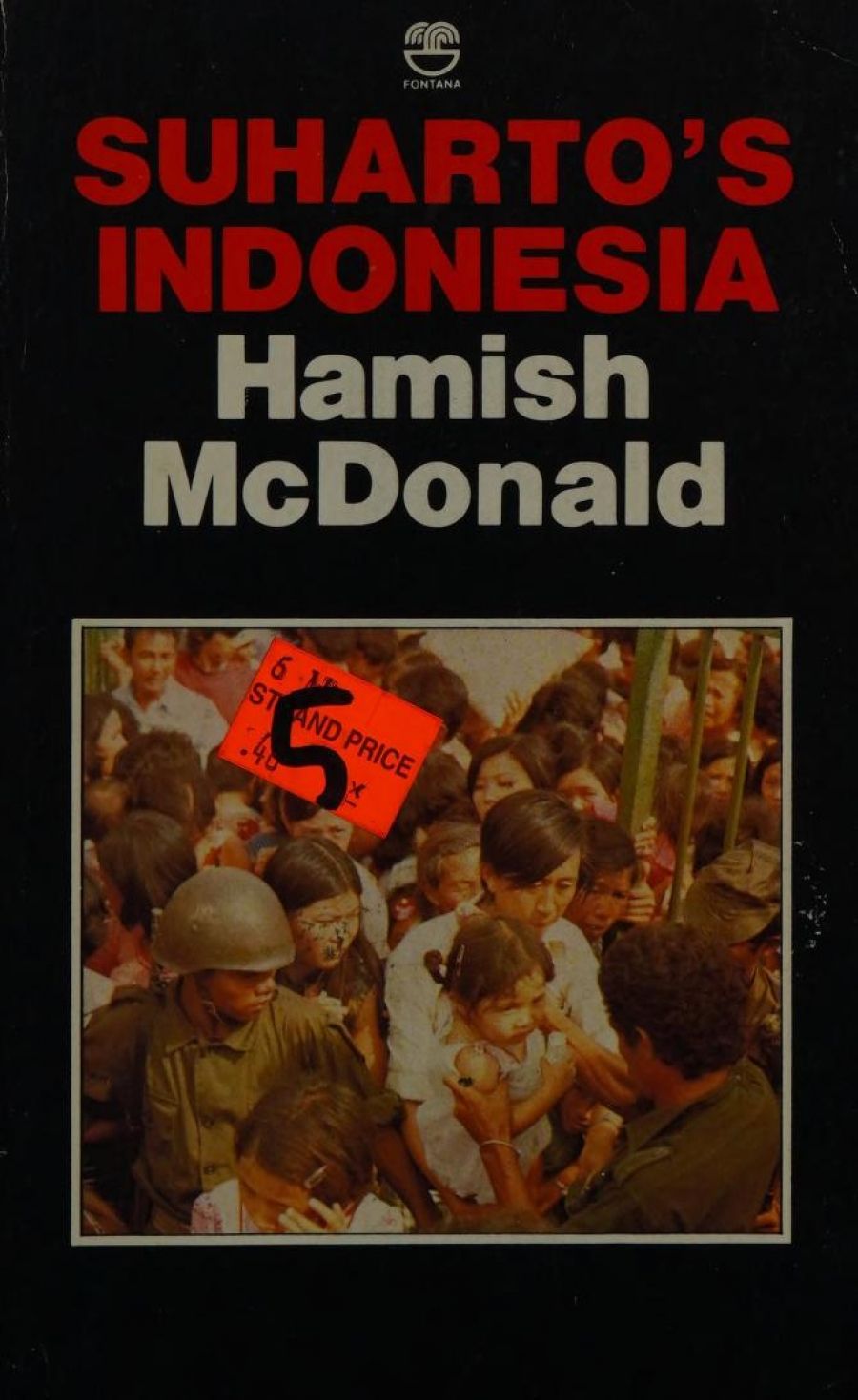
- Free Article: No
- Contents Category: Biography
- Review Article: Yes
- Article Title: President on an empty stage
- Online Only: No
- Custom Highlight Text:
Hamish McDonald has provided us with the first biography of President Suharto since O.G. Roeder’s authorized work which appeared in 1969. It is not only much more critical, but more comprehensive, and, as much of this second book deals with the events of the last few years, it can be said to be about a different Indonesia and a different President Suharto.
- Book 1 Title: Suharto’s Indonesia
- Book 1 Biblio: Fontana/Collins, $5.95. 277 pp
By the end of the book we know very little more about the person than we do at the end of Chapter One. Unlike Soekarno who had claimed to be the voice of Indonesia, and who had enthralled thousands in his early days and again through the days of the Japanese Occupation, . by the use of Singing Towers (radio) and through the trials of the revolutionary period. This phlegmatic successor to Soekarno was clearly not a ‘solidarity maker’.
As the remaining ten chapters unfold we learn a great deal about Jakarta politics and the glossary is most necessary for the would-be student of Indonesian Politics unfamiliar with the Indonesian gift for acronyms. The continued erosion of any meaningful. role for political parties was of course a trend well begun by the previous President. Now however we see instead a President holding defiantly to the centre of the stage of Government as theatre, a theatre shut down, an empty stage, with a notice saying ‘No Further Performance’. This president is not interested in theatre at all he promises instead, ‘25 years of Accelerated Modernization’.
Hamish McDonald has described the role of the fixers and the technocrats in the execution of this New Order, and the acceleration of the misery of its victims he has shown us the impoverishment of both kampong and village, the plight of thousands in gaols without trial for up to thirteen years, and the gradual starvation of the East Timor population, with sensitivity as well as the meticulous attention to detail for which he has won high esteem. His cross-checking of his sources as part of his journalist’s craft has produced an impressive array of evidence in each area he has covered.
Perhaps it is inevitable that many students may finish the book very little the wiser about what really makes Java understandable to the West. We really do not understand this cautious administrator President who smiles upon the public and keeps his own council. We as outsiders have not yet learnt to understand the Javanese world view ‘that essential rock of Javanese personality’ which was claimed by the founder of Taman Siswa schools sixty years ago to be inexplicable to the Dutch despite their well-meaning efforts.
Moreover, we have certainly not learnt to understand the revival of Islam in Indonesia. Islamic leaders are ‘the one source of authority in the villages and kampongs that the Golkar machine was unable to diminish’, the unfashionable devout are now held up as ‘unpatriotic’, yet whose students continue to call for the justice they claim as their due, an without which ‘harmony has continued to elude Suharto’. These interwoven religious conflicts are not easy for secular minded outsiders to understand. But this book certainly is gripping reading and is a valuable addition for any student and is willing to admit that learning about another political and religious culture ‘was not meant to be easy’.


Comments powered by CComment